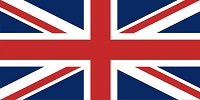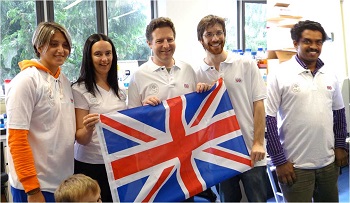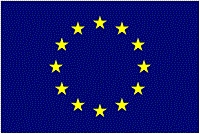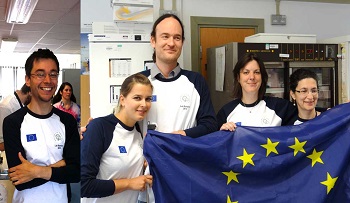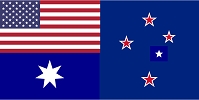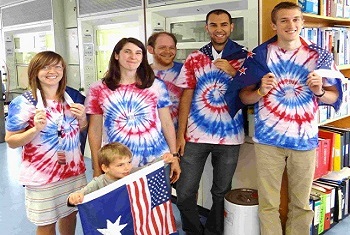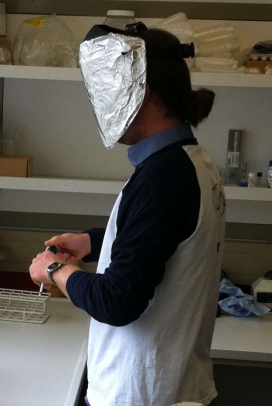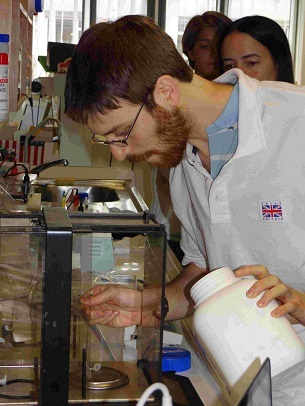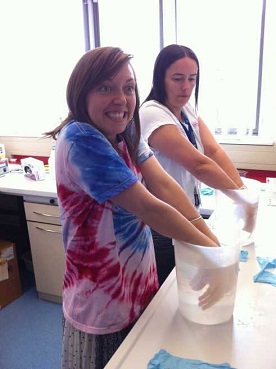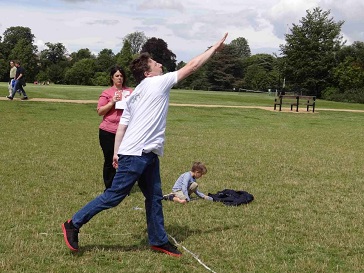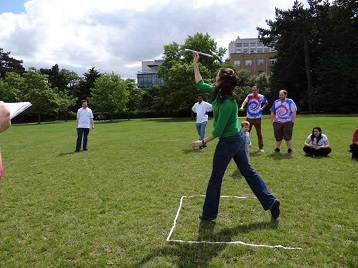Zitzmann Lab Olympics
| During the London 2012 Olympics, the Zitzmann lab had their very own lab-based Olympics. |
Quick Links The teams
|
||||||||||||||||||||||||||||||||||||||||||||||||
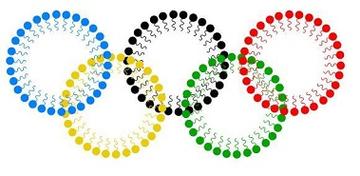
The Zitzmann Lab Olympics logo: The rings represent liposomes which are currently being investigated in the Zitzmann group for drug delivery. The dots represent the phospholipid heads and the wavy lines represent phospholipid tails. |
|||||||||||||||||||||||||||||||||||||||||||||||||
| The teams | |||||||||||||||||||||||||||||||||||||||||||||||||
| Three teams were chosen (Team GB, Eurozone and CANZUS) with 5 scientific athletes in each team. | |||||||||||||||||||||||||||||||||||||||||||||||||
|
|||||||||||||||||||||||||||||||||||||||||||||||||
| Several Olympic Committee meetings were held prior to the Lab Olympics to organise teams, ceremonies, medals, events and timetabling of events. Four Olympic Sub-Committees were made to set rules for each event. | |||||||||||||||||||||||||||||||||||||||||||||||||
|
|||||||||||||||||||||||||||||||||||||||||||||||||
|
The Zitzmann lab Olympics Opening Ceremony was held on 1st August 2012 at 12:30GMT which included an opening speech given by Jo Miller (El Presidente of the Zitzmann lab Olympics), marches of teams in their kit + flags, team anthems and a spectacular display of pyrotechnics by JL Kiappes. The Master of the Ceremony was Simon Spiro. 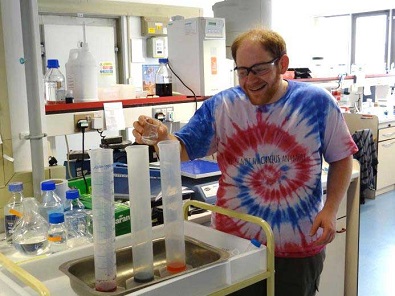
The opening ceremony by J.L. Kiappes |
|||||||||||||||||||||||||||||||||||||||||||||||||
|
The events Outdoor events in the University Parks: |
|||||||||||||||||||||||||||||||||||||||||||||||||
|
|||||||||||||||||||||||||||||||||||||||||||||||||
| Outdoor event at the mid-Olympic barbeque: | |||||||||||||||||||||||||||||||||||||||||||||||||
Archery – Accuracy of ejecting a pipette tip five times from a P1000 in the same place.
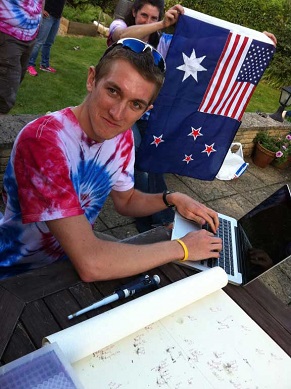
Drew Sayce calculating the competitor’s score (R) in the pipette archery event. |
|||||||||||||||||||||||||||||||||||||||||||||||||
|
Indoor events in the Oxford Glycobiology Institute: Tip box filling – A relay event with 4 people per team where each person fills a row of pipettes into a box. Parafilm stretch – Furthest stretch of a piece of Parafilm. Sailing – Sinking weight boats floating in a water bath sonicator using water filled 5ml Bijous. For more details about the events, see the Official Zitzmann Lab Olympics Rules below.
|
|||||||||||||||||||||||||||||||||||||||||||||||||
|
Medals were awarded to scientific athletes after each event and were as follows: 1st position: 79Au (aurum; aka Gold) 2nd position: 47Ag (argentum; aka Silver) 3rd position: 29Cu/50Sn: (alloy of cuprum (copper) and stannum (tin); aka Bronze). 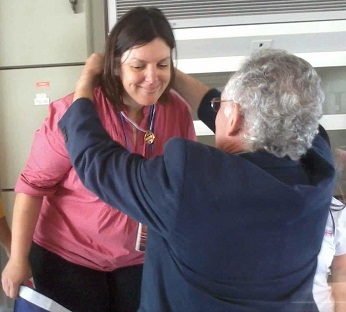
Raymond Dwek awards Nicole Zitzmann with a gold medal. |
|||||||||||||||||||||||||||||||||||||||||||||||||
|
|||||||||||||||||||||||||||||||||||||||||||||||||
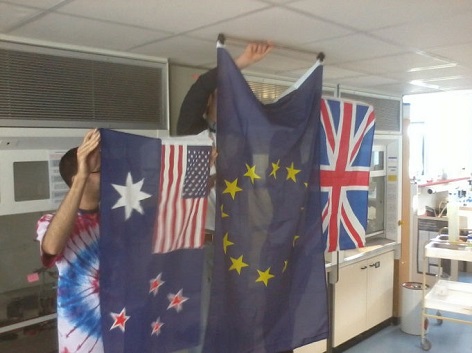
Raising of team flags on the podium after an event |
|||||||||||||||||||||||||||||||||||||||||||||||||
| It was decided to use a scoring system with Au as 5 points, Ag as 3 points and Cu/Sn as 1 point. The cumulative medal tally is below (with the cumulative points in parentheses): | |||||||||||||||||||||||||||||||||||||||||||||||||
|
|||||||||||||||||||||||||||||||||||||||||||||||||
|
The Official Zitzmann Lab Olympics Rules: 25ml pipette javelin – maximum anticipated time of 1hr, likely 30-45min |
|||||||||||||||||||||||||||||||||||||||||||||||||
50ml Falcon shot put – maxiumum anticipated time of 1hr, likely 30-45 min
|
|||||||||||||||||||||||||||||||||||||||||||||||||
Pipette archery – significant prep time on the day (exp 30min), 30 mins for competition, 30min-1hr for scoring (can be performed later)
5 points are obtained {xn,yn} x1,y1=(-2,1) x2,y2=(-2,-1) x3,y3=(4,3) x4,y4=(3,-2) x5,y5=(6,1) Yielding centroid, xc,yc=(1.8,0.4) Therefore points are re-centered to {xn’,yn’} x1’,y1’=(-3.8,0.6) x2’,y2’=(-3.8,-1.4) x3’,y3’=(2.2,2.6) x4’,y4’=(1.2,-2.4) x5’,y5’=(4.2,0.6)
(xn’,yn’) to (rn,qn) r1,q1=sqrt[(-3.8^2)+(0.6^2)],tan-1(y/x) r1,q1=sqrt(15),tan-1(3/19) R=17.456 The lowest value of R shall be deemed the winner.
Event “Parafilm stretching” (estimated time: 1hr) Judges: two; judges prepare two Olympic standard parafilm squares (approx. 2 inches square) each with 2 small dots (marker pen – smaller dots are best), backing removed, per athlete. Event: 30 seconds per parafilm rectangle, two per athlete. Maximum free resting length between the dots(i.e. put on the bench without touching) and measured with an Olympic standard plastic ruler to be obtained from Steve’s drawer (no imperial measurements). Heat: All team members allowed. Multiple rounds of 2 athletes/round. Top 8 enter finals, maximum two per team plus next 2 longest stretches. No double entries allowed. Final: To be held in inverse order of pole position (ie. those with longest length from heat compete in final first). Winner: One judge to measure within 5 secs of end of event, while althete holds parafilm. In case of close calls meaning lengths within in 1 mm, second judge will measure again and decide. In case of a draw, repeat once more for the golden stretch (one more rectangle each, 15 seconds; same rules apply). Disqualification in case of going over time and/or ripping the rectangle.
Event “tight, wet squeeze” (estimated time: 30 mins) Judges: three (one to be supplied from each team). Entries: two per team, no double entries. Rounds: one round. Event: Gloves put next to water beakers by judges. Athletes commence event with hands submerged to the wrist in H20 in supplied beakers. Timer starts on the call of a judge. Shaking hands is fine, wiping is not. Winner: Athlete who has both hands in the gloves the furthest after 20 seconds. Dry run to be performed beforehand for judges to confirm each athletes competition glove size (yes, size does matter!). Judges: Decisions are final. No input from the audience as to whose fingers are most deeply in their gloves. If not unanimous, majority decides. Fingertips of the gloves should be tight. The interdigital base of the glove needs to be down a minimum of ¾ length of the finger. Athletes: Kamasutra positions allowed. No lube. Event “sailing or actually sinking” (estimated time: 60 mins) Judges: one judge per heat and two in the final, decision are final (chocolate or alcohol bribes accepted). Entries: All team members allowed. Four heats of 3 people, one from each team in each heat. Winners of each heat proceed to final. Event: Each athlete is issued with one two inch square Olympic Standard weigh boat from the draw under the gel stuff. Athletes MUST decorate/label boats; labels have to be in accordance with the IOC convention for weigh boat labelling and the international convention against discrimination. Athletes launch boats at pre-labelled launching sites in the big bad-ass sonicator (filled to standard Olympic water depth). Athletes stand one metric meter (judges please mark on ground with tape, no ventral bending, i.e. body must be vertical) and fire provided “cannonballs” (five mL Bijous filled with four mL of H20). Althetes in each heat all get at least one throw. Once your boat is sunk, you can no longer throw cannonballs. If you boat is still afloat (even partially) you continue taking turns firing cannonballs, trying to sink opponents boats. The order athletes fire in is to be determined by a pre-event on land, based on drawing straws. Winner: One shot per athlete until only one boat remains floating. Third last boat floating awarded bronze, second last silver, final boat floating awarded gold.
Event “Weight Lifting” Judges: Two: one for time, one for accuracy Entries: 2 per team Event: Salt from Tesco will be measured out in two different sub events: Light weights (50 mg) and heavy weights (3 g). The 50 mg will be weighed into a 1.5-mL eppendorf, while the 3 g will be into a standard weigh boat. Winner: Each competitor will receive a score out of 15 points. 5 of these points will be for time, 10 for accuracy. All competitors are invited to participate in heats to determine the cutoffs in the formulae as follows: Time: 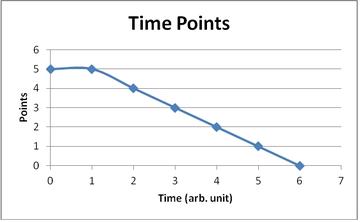
Accuracy: 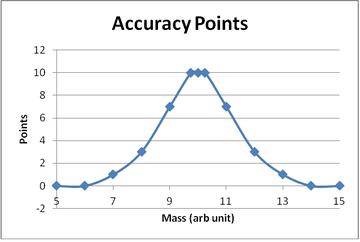
Total time: 15-20 minutes
Event “Tip Box Relay” Judges: two Entries: 4 per team as a team Event: Each person will fill one row of pipette tips into a box. Once a pipette tip has been dropped, it can no longer be used and a time penalty is incurred. After the first person has filled their row, they tag the next team member who proceeds. Etc. The rows must be filled in the following order: Attach rack => Row 1 => Row 3 => Row 4 => Row 2 Winner: Fastest team to have all 4 rows filled (after taking penalties into consideration) wins.
Event “Figure 8 Wheelie Race” Judges: One judge per team Entries: Must sign a safety waver; Must wear a helmet. 4 per team Event: Take place on ground floor in 10.07. Each person will have to do one figure 8 lap. Along the way, there will be one check point per person (turning a device on/off or something similar). Once the first person returns to the starting point, they get off the chair, the second person sits down and does their lap, etc Touching any of the “walls” (benches in the middle or at edge of room) results in automatic disqualification. Winner: Fastest team time. Total time: 15-20 minutes (?)
Event “Biathlon” Judges: Three (one per team). Entries: One per team, where course is completed in succession by individual from each team in random order. Equipment: 3 x 96 well plates 2 x 200 uL pipettes 1 x 200 uL pipette tip box (full) 1 x used pipette tip receptacle 1 x blind fold 1 x official 2012 Lab Olympic timer 1 x 500 mL MilliQ water in 500 mL Schott bottle (replenished between rounds) Event:
For each competitor, all three judges will weigh a 96 well plate on the Sartorius MC1 analytic AC 210 S scale. The average (mean) of the three recorded weights will be used as the “preweighed weight” (to 3 decimal places). During the event, two judges will be required (one from both non-competing team). These judges will set the 200uL pipettes. Furthermore, one will regulate “palm touch” and timing on Steve’s bench, the other will regulate blindfolding and pipetting station. Winner: Winning team will be the team with the highest score, which will be deduced as follows: 1 – Time: The final time will be recorded from the timer as 00:00:00 (minutes:seconds:milliseconds). The times will be ranked in order 1 to 3 with 1 being the fastest. 2 - The resultant 96 well plate will be weighed using Sartorius MC1 analytic AC 210 S scale by all three judges. The average (mean) of the three recorded weights will be used as the final weight. Final weight should equal: preweighed weight + 6.000 g. Deviation from the calculated weight will be taken as an absolute value. The smaller this deviation value the more accurate the pipetting. The accuracy will be ranked in order 1 to 3, with 3 being the most accurate. Points will be awarded as follows:
Total time: 45 minutes MEDALS: Add 5 minutes to each event for medal ceremony |
|||||||||||||||||||||||||||||||||||||||||||||||||


